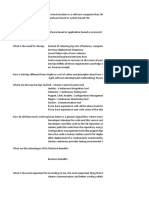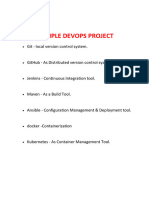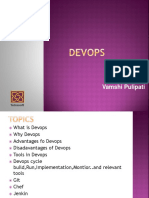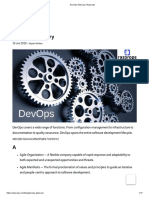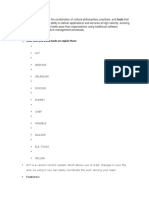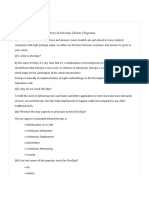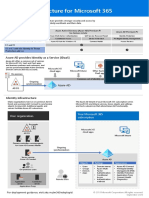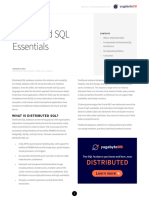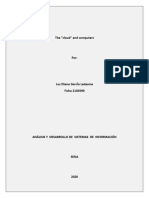0% found this document useful (0 votes)
6 views4 pagesInt Q A Devops
DevOps is a software development practice that integrates development and operations to enhance software delivery speed and quality. Key components include Continuous Integration, Continuous Testing, Continuous Delivery, and Continuous Monitoring, supported by tools like Jenkins, Git, and Docker. The document also discusses version control systems, cloud computing, and automation tools like Chef and Vagrant.
Uploaded by
jerryparamesh34Copyright
© © All Rights Reserved
We take content rights seriously. If you suspect this is your content, claim it here.
Available Formats
Download as DOCX, PDF, TXT or read online on Scribd
0% found this document useful (0 votes)
6 views4 pagesInt Q A Devops
DevOps is a software development practice that integrates development and operations to enhance software delivery speed and quality. Key components include Continuous Integration, Continuous Testing, Continuous Delivery, and Continuous Monitoring, supported by tools like Jenkins, Git, and Docker. The document also discusses version control systems, cloud computing, and automation tools like Chef and Vagrant.
Uploaded by
jerryparamesh34Copyright
© © All Rights Reserved
We take content rights seriously. If you suspect this is your content, claim it here.
Available Formats
Download as DOCX, PDF, TXT or read online on Scribd
/ 4






